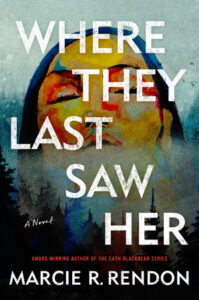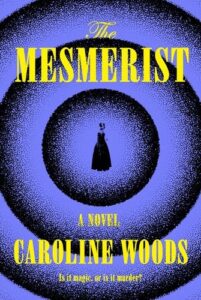Minnesota is having something of a moment. Ever since Vice President Harris chose Minnesota governor Tim Walz as her running mate, Americans from coast to coast have turned our attention to the North Star State, from considering Minnesota’s free breakfast and lunch program as a model for nationwide change to parsing the particularly Minnesotan connotations of the word “weird.”
It’s not news, however, that Minnesota has long held a cherished place in the popular imagination when it comes to crime fiction and film. So many of its characteristic elements and quirks make the state the perfect setting for chilling stories. The impenetrably dark forests; the thousands of lakes, which, when frozen, provide a particularly ghastly venue for murder; and of course, the delicious contrasts and contradictions. Hotdish and hot tempers. The shocking red of blood against flat white snow. Threatening words delivered in a cheery accent (sometimes done well, sometimes not).
The fact that we tend to think of vice in Minnesota as somehow off-brand, even though crime happens there as often as it does everywhere else, is exactly what makes it so perfectly on-brand in fiction.
The early white settlers of the Twin Cities deliberately cultivated their new home’s puritanical image, as I found while researching my new novel, The Mesmerist, which is set in a home for unwed mothers in Minneapolis in 1894. Much of the wealth and power in early Minneapolis was held by New England transplants, who brought with them a particular Yankee flavor of NIMBYism that the city’s politicians, historians, and journalists clung to for years to come.
For example: the Minneapolis Chronicle ran a pearl-clutching article in 1867 reporting that a “notorious prostitute” from St. Paul was planning to open what the paper claimed would be the very first brothel in Minneapolis. In fact, a simple record check proves the sex trade had been booming along the Mississippi since the city’s earliest days, back when it was called St. Anthony. I’m guessing the reporter was well aware of this, especially since a noisy mob had forcibly shut down a Minneapolis brothel a full ten years before his article was published.
But the great Minnesota crime writers—of which there are many—have always pushed back against what historian Penny Petersen calls “Minneapolis’s tidy version of its past.” I’d argue that this is what truly makes thrillers and mysteries set in Minnesota so exceptional; contrary to the state’s reputation for buttoned-up denial, its writers and activists, often led by Indigenous voices, have insisted on a very public reckoning with the state’s history.
Consider what’s happened there just in the past few years: the state flag has been changed to eliminate a colonialist depiction of an Indigenous man and a settler. The new state seal includes, for the first time, the Dakota phrase “Mni Sota Makoce,” the origin of the state’s name. Indigenous place names have been restored, such as Bde Maka Ska, site of the real-life murder that inspired The Mesmerist. In 1894 it was called Lake Calhoun, but now, thanks to the tireless efforts of Indigenous activists, the lake is once again called by its Dakota name. And at 38th and Chicago in Minneapolis, George Floyd Square still stands; activists have kept the streets barricaded there since 2020, creating a living, breathing memorial.
Minnesota’s great writers, among them Louise Erdrich, Marcie Rendon, and William Kent Krueger, manage to convey a deep love of the state’s natural beauty and its peoples while simultaneously exposing the darker sides to its history, from the struggles returning veterans face when they come home to the ongoing effects of centuries of racism and colonial rule. They embody the most poignant of the state’s sharp contrasts.
Here’s just a sample of the great crime novels set in Minnesota, some classics, some new:

William Kent Krueger, The River We Remember
This stand-alone novel from the author of the Cork O’Connor novels begins with the 1958 murder of one of the most prominent landowners in Jewel, Minnesota. Rumors begin to circulate that the killer is an Indigenous WWII veteran who has just moved to town with his Japanese wife. Sheriff Brody Dern, also a decorated veteran, must navigate the complexities of a town scarred by war and divided by prejudice as he works to solve the case.

Marcie Rendon, Where They Last Saw Her
Beloved Minnesota crime writer Rendon’s latest focuses on missing and murdered Indigenous women and girls, a growing awareness of which has inspired the hashtag #MMIWG, though Rendon is quick to remind readers that the phenomenon is nothing new. Indigenous women have been going missing since this country was founded. In Where They Last Saw Her, the detectives are three Ojibwe women, amateur sleuths who train together as runners, who hear a scream on the trail and decide to investigate. Their camaraderie and warmth permeate the pages of an otherwise dark thriller.

Louise Erdrich, The Sentence
The Sentence is more of a ghost story than a crime novel—The Round House comes to mind as one of Erdrich’s best mysteries, though that one’s set in North Dakota—but the novel fits this list because of its intense probing of Minnesota’s recent history, from the aftermath of George Floyd’s murder to the racial and class disparities laid bare by the Covid-19 pandemic. It’s also a love story to bookstores, the healing qualities of books, and the power a group of women can acquire when they hold the keys to the written word.

Tim O’Brien, In the Lake of the Woods
O’Brien’s non-linear masterpiece follows John Wade, who just lost his race for a U.S. Senate seat following the public’s discovery of his role in the My Lai massacre during the Vietnam War. Wade retreats to the Lake of the Woods, an enormous lake that sits on the border of Minnesota and Canada; soon afterward, his wife disappears. But this isn’t the typical whodunit, and don’t expect it to be solved in a typical fashion, either; its unique approach to the typical structure of a crime novel is part of what makes it so great.

Allen Eskens, The Life We Bury
The Life We Bury begins with Joe Talbert, a junior at the University of Minnesota, receiving a class assignment to interview a dying man in a nursing home: Carl Iverson, who spent thirty years in prison for the murder of a fourteen-year-old girl and has just been paroled for medical purposes. As Joe digs into Carl’s past, he discovers the man was a Vietnam war hero (a theme in this list!) and when he cannot square that history with the crime this man supposedly committed, sets out to discover the truth.
***


















